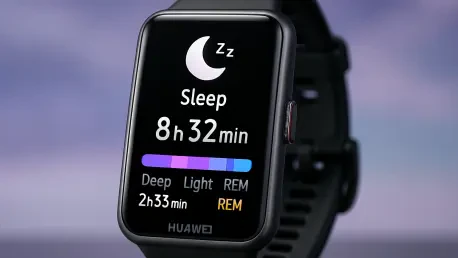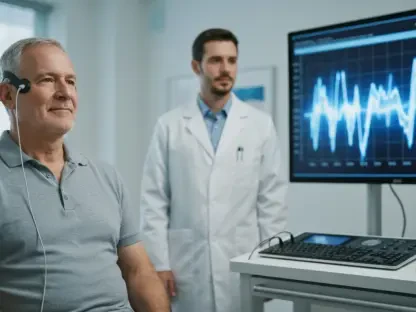What if the sleek device on your wrist could decode the mysteries of your nightly rest—or completely misguide you with inaccurate data? With millions of people slipping on smartwatches to monitor their sleep, the accuracy of these gadgets has become a pressing concern. Among them, the Huawei WATCH GT2 stands out as a popular choice, especially in diverse global markets. This exploration dives deep into whether this wearable truly delivers trustworthy insights or falls short when measured against clinical standards, sparking curiosity about the intersection of technology and health.
Why Sleep Tracking Is a Game-Changer
Sleep is far more than a pause in the day; it’s a vital pillar of well-being, tied to everything from heart health to cognitive sharpness. Yet, with over 30% of adults grappling with insufficient rest, the demand for accessible monitoring tools has skyrocketed. Traditional sleep labs, though accurate, often come with hefty costs and logistical hurdles, creating a void that wearable tech aims to bridge. Devices like Huawei’s smartwatch promise a convenient solution, but their reliability remains under scrutiny as society increasingly leans on them for health insights.
The significance of this trend extends beyond personal curiosity. As sleep disorders are linked to serious conditions like cardiovascular issues and mental health challenges, accurate tracking could empower individuals to make informed lifestyle changes. This growing reliance on consumer-grade devices, particularly in non-Western regions where Huawei dominates, elevates the need to validate their performance against established medical benchmarks, shaping the future of public health strategies.
Inside the Huawei WATCH GT2: A Clinical Test
A groundbreaking study from a Chinese sleep clinic, involving 98 participants, put the Huawei WATCH GT2 to the test against polysomnography (PSG), the gold standard for sleep analysis. The results revealed a device with notable strengths in basic monitoring, achieving an 87.3% accuracy rate in distinguishing sleep from wakefulness, alongside a sensitivity of 95.3%. Such figures suggest it holds promise for casual users seeking a snapshot of their nightly patterns.
However, the smartwatch stumbled when tasked with identifying specific sleep stages like REM and deep sleep, often miscategorizing them as light sleep. It overestimated total sleep time by roughly 28.5 minutes and underestimated wake time after sleep onset by 37 minutes. These discrepancies highlight a critical gap between the device’s capabilities and the precision required for deeper health assessments, raising questions about its broader applicability.
Particularly concerning was its performance among individuals with sleep disorders such as insomnia or obstructive sleep apnea (OSA). Accuracy dipped in these clinical populations compared to healthy participants, underscoring limitations in complex scenarios. While the device nearly aligns with research-grade actigraphy standards for sleep time bias, it clearly falls short of replacing PSG for diagnostic purposes, painting a mixed picture of its utility.
Voices from the Field: Experts and Users Weigh In
Sleep researchers involved in the study provided nuanced perspectives on the findings. With a Cohen’s κ value of 0.43—indicating moderate agreement with PSG, and rising to 0.75 when adjusted for bias—the data suggests cautious optimism for everyday use. Dr. Zhang, a sleep specialist, noted, “These wearables can make sleep tracking accessible to many, but they’re not diagnostic tools. Users must interpret the numbers with a grain of salt.”
Beyond the lab, real-world feedback from users mirrors this sentiment. Online discussions reveal appreciation for how the Huawei WATCH GT2 raises awareness of sleep habits, yet frustration surfaces over inconsistencies, like overreporting sleep on nights filled with tossing and turning. This blend of scientific analysis and personal experiences illustrates the delicate balance between the potential of consumer tech and its current shortcomings in delivering precise health data.
Maximizing the Huawei Smartwatch for Sleep Insights
Given the strengths and limitations uncovered, leveraging the Huawei WATCH GT2 effectively requires a strategic approach. Focus on identifying long-term trends rather than obsessing over nightly specifics, especially since the device tends to inflate sleep duration. For instance, noticing a pattern of delayed bedtimes can prompt actionable changes without relying on exact stage breakdowns.
Complementing the data with lifestyle tweaks can amplify its value. If the smartwatch flags low sleep efficiency, experimenting with habits like cutting screen time before bed and tracking subsequent improvements offers a practical way forward. Additionally, ensuring the device is worn snugly each night minimizes data loss from movement, a known issue in the study, and regular app syncing maintains consistency in readings.
For those suspecting deeper issues like OSA, the smartwatch should not stand alone as a diagnostic tool. Persistent fragmented sleep patterns warrant a consultation with a sleep specialist for a comprehensive PSG evaluation. Treating the device as a supplementary aid rather than a medical authority helps harness its benefits while avoiding over-reliance on imperfect metrics.
Bridging Tech and Trust: What Lies Ahead
Looking back, the journey of evaluating the Huawei WATCH GT2 revealed a device with commendable potential for basic sleep monitoring, yet clear boundaries in clinical accuracy. The study and user experiences underscored a pivotal moment where technology intersects with health, offering accessibility but demanding caution. Each insight, from lab results to personal anecdotes, contributed to a fuller understanding of wearable tech’s role in daily life.
Moving forward, the path to trust in such devices hinges on continued research with larger, more diverse groups to refine their precision. Encouraging transparency in algorithmic design by manufacturers could further bridge the gap between consumer tools and clinical needs. For now, individuals are wise to use these smartwatches as starting points—tools to spark curiosity about sleep health and prompt deeper investigation when necessary, ensuring technology serves as a partner, not a sole guide, in the quest for better rest.









